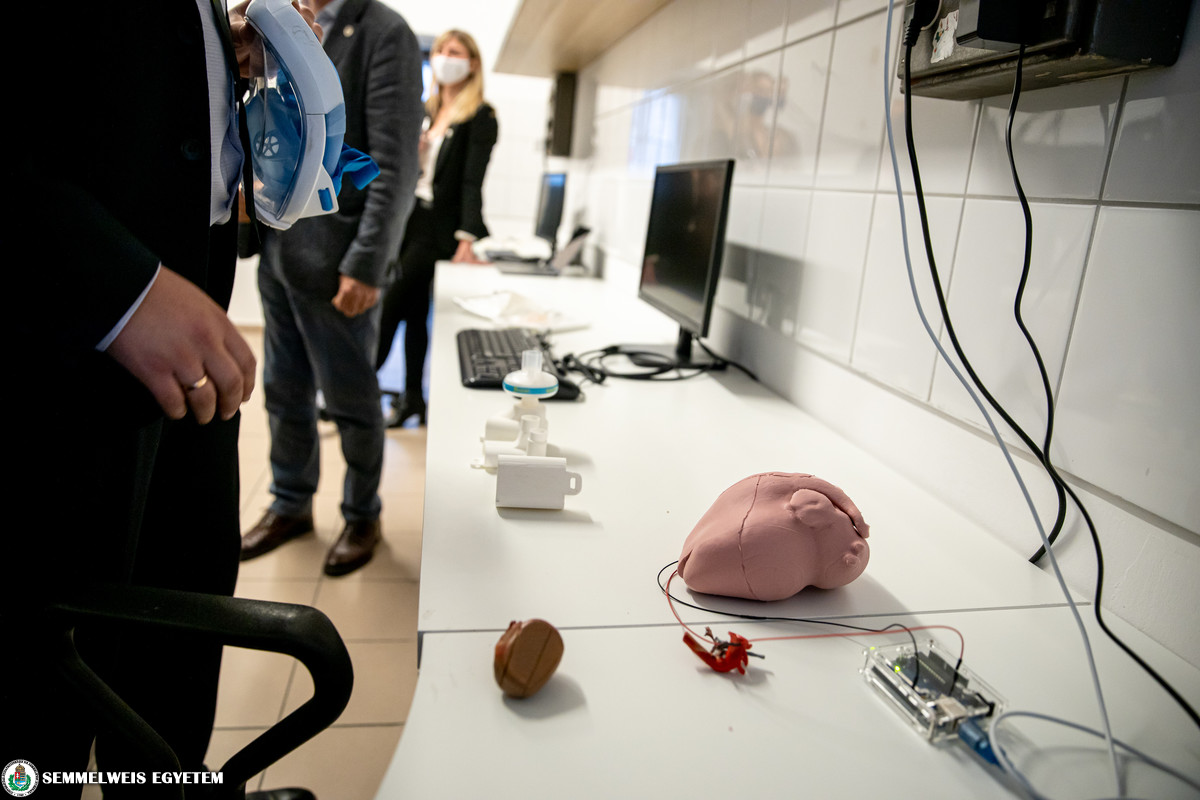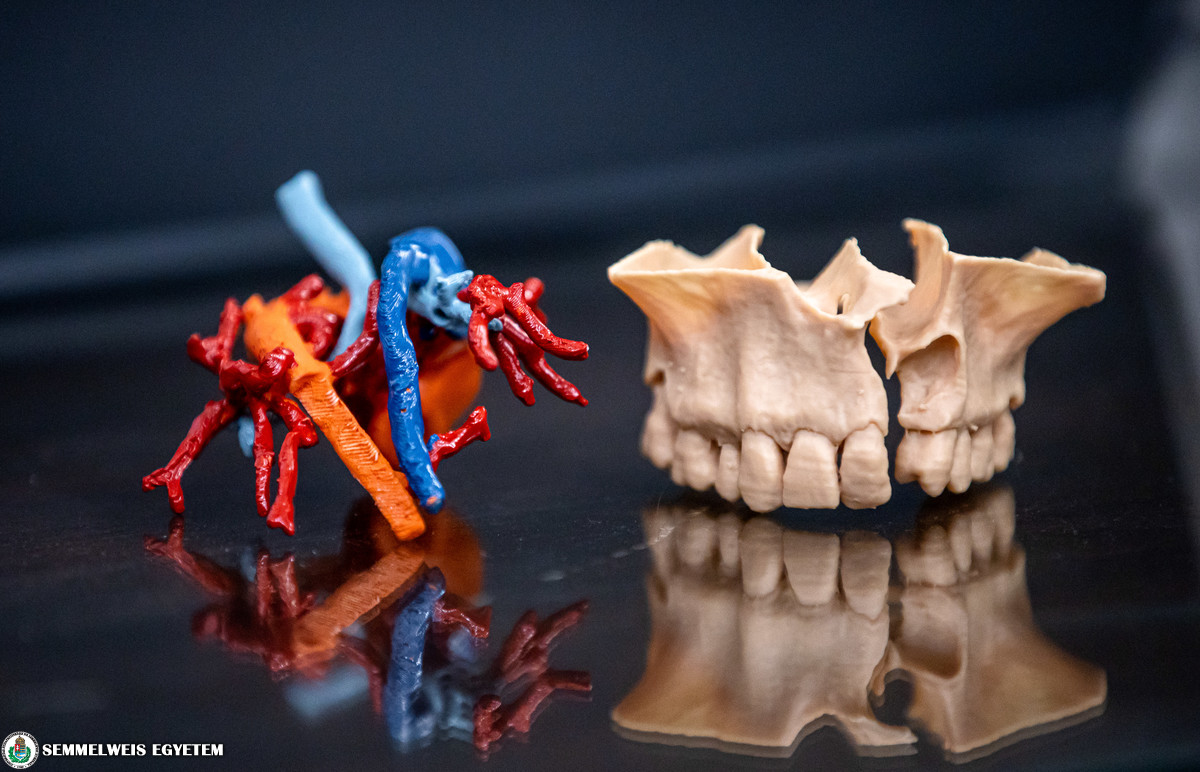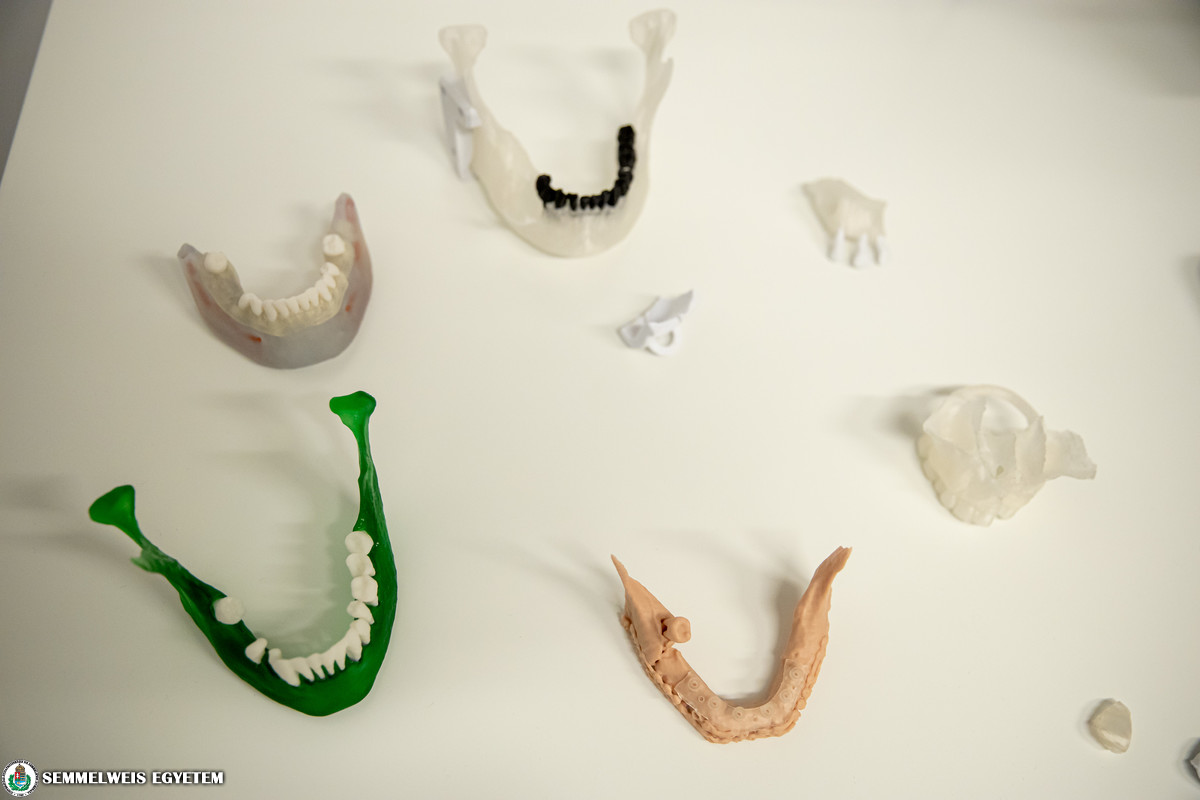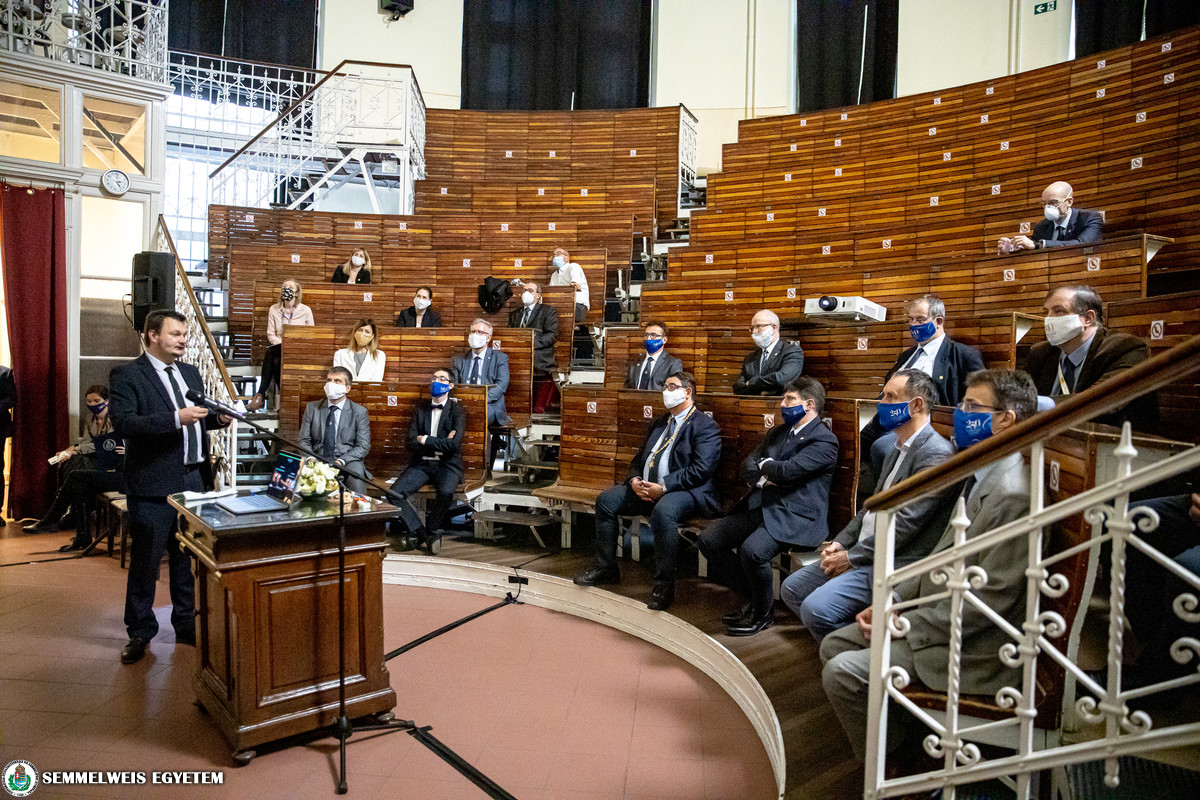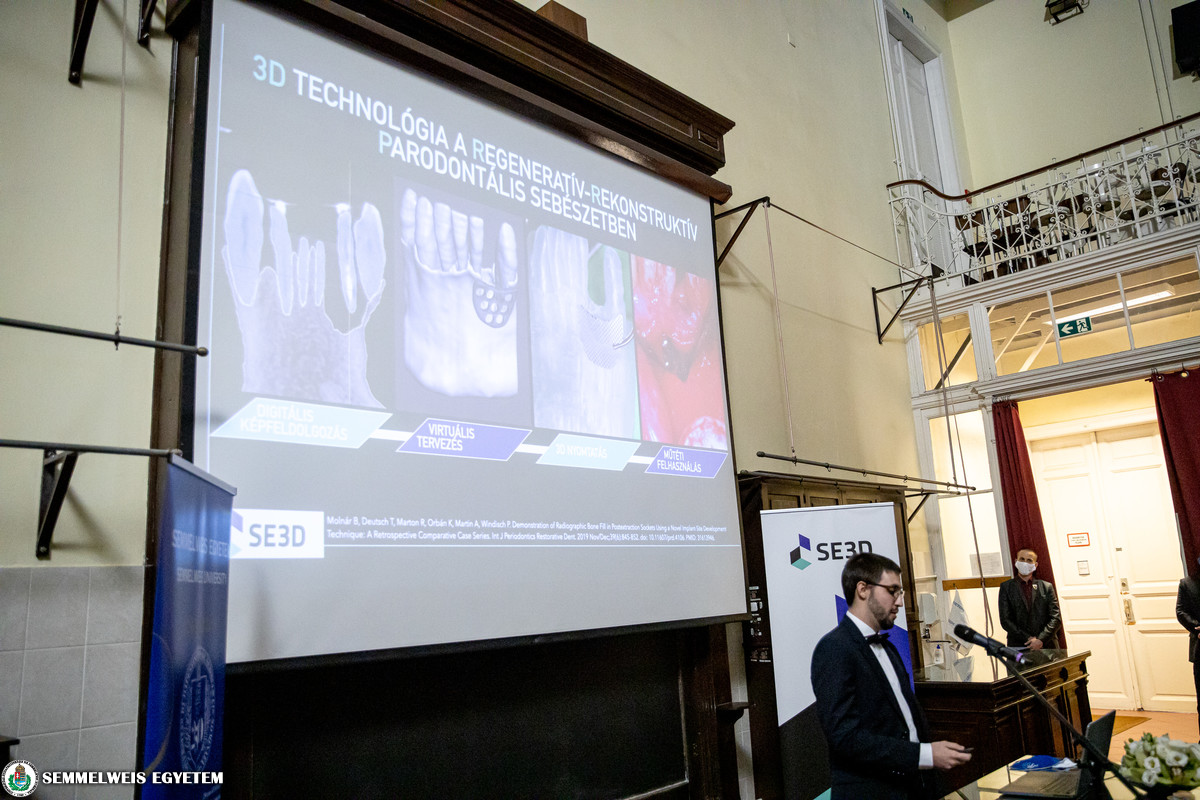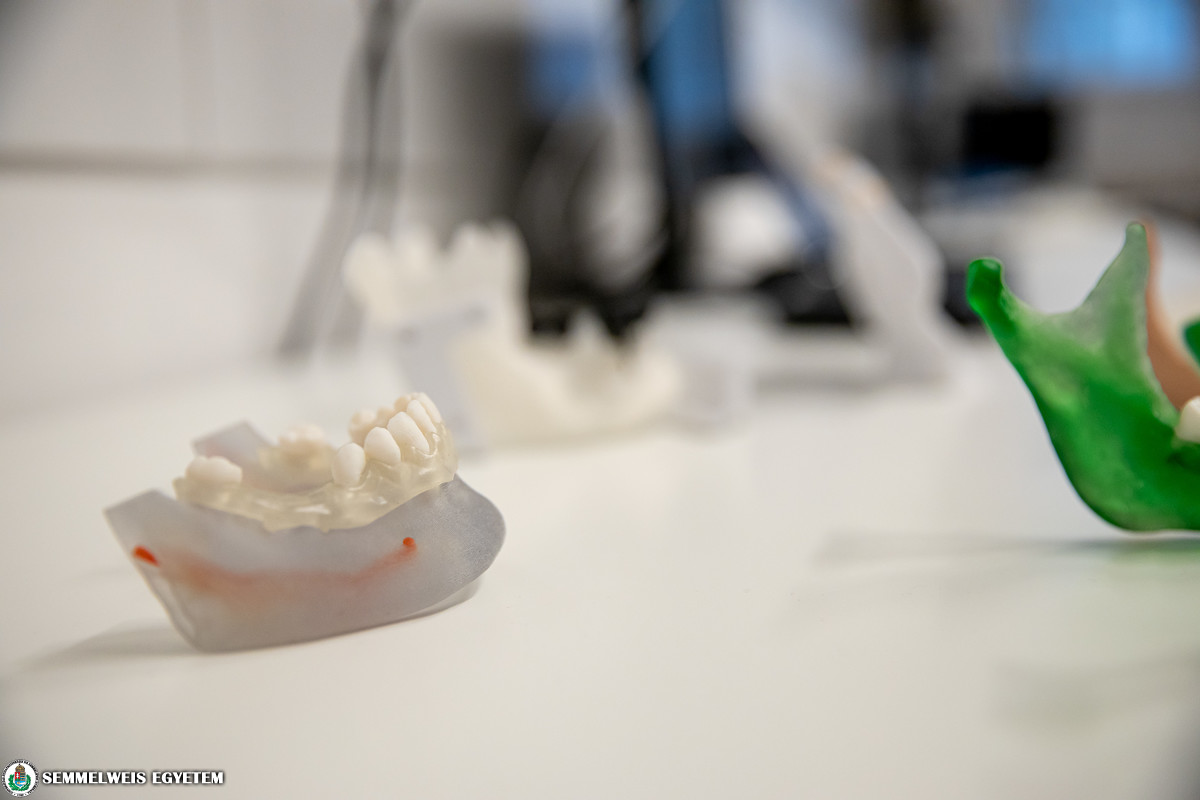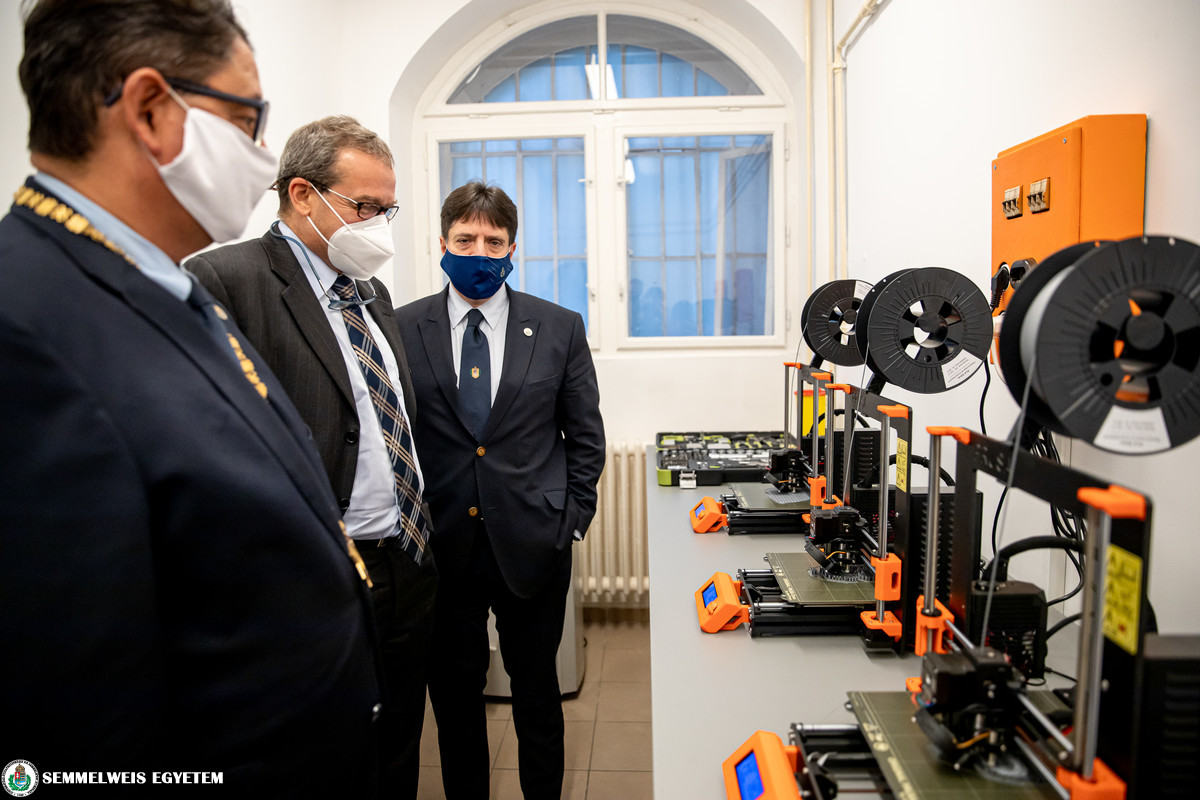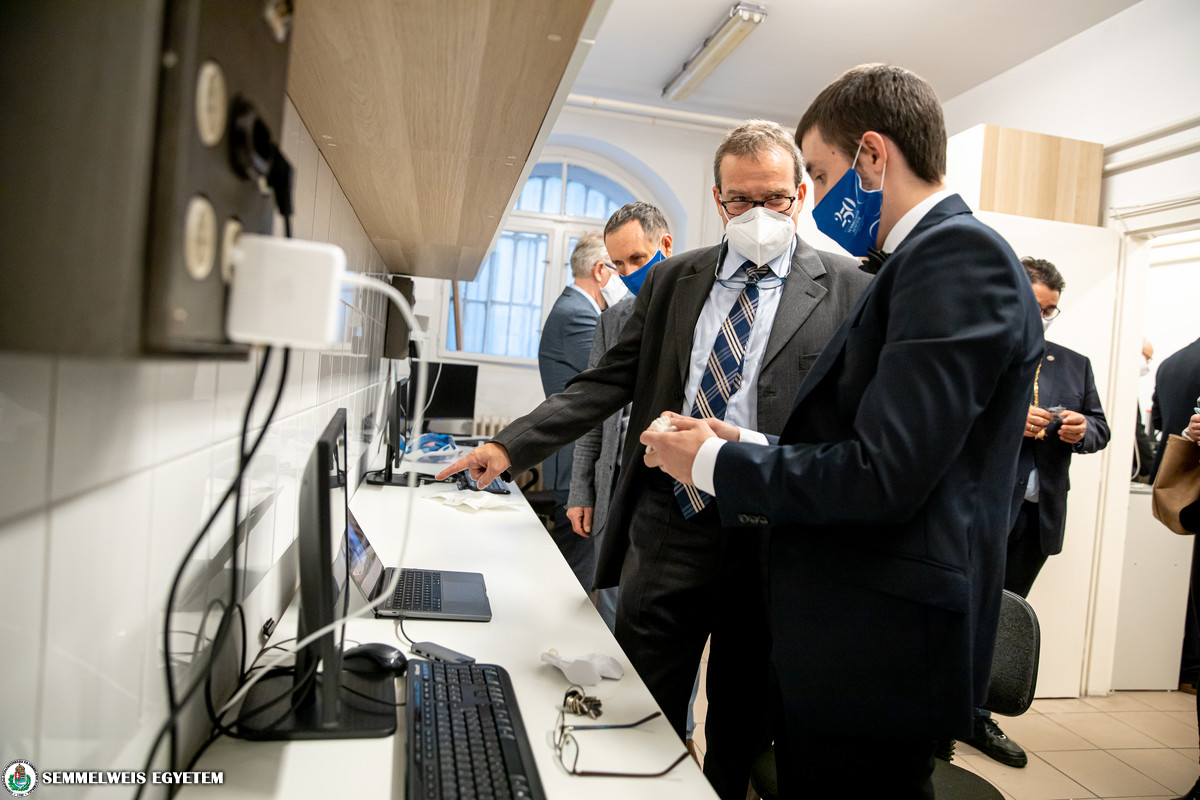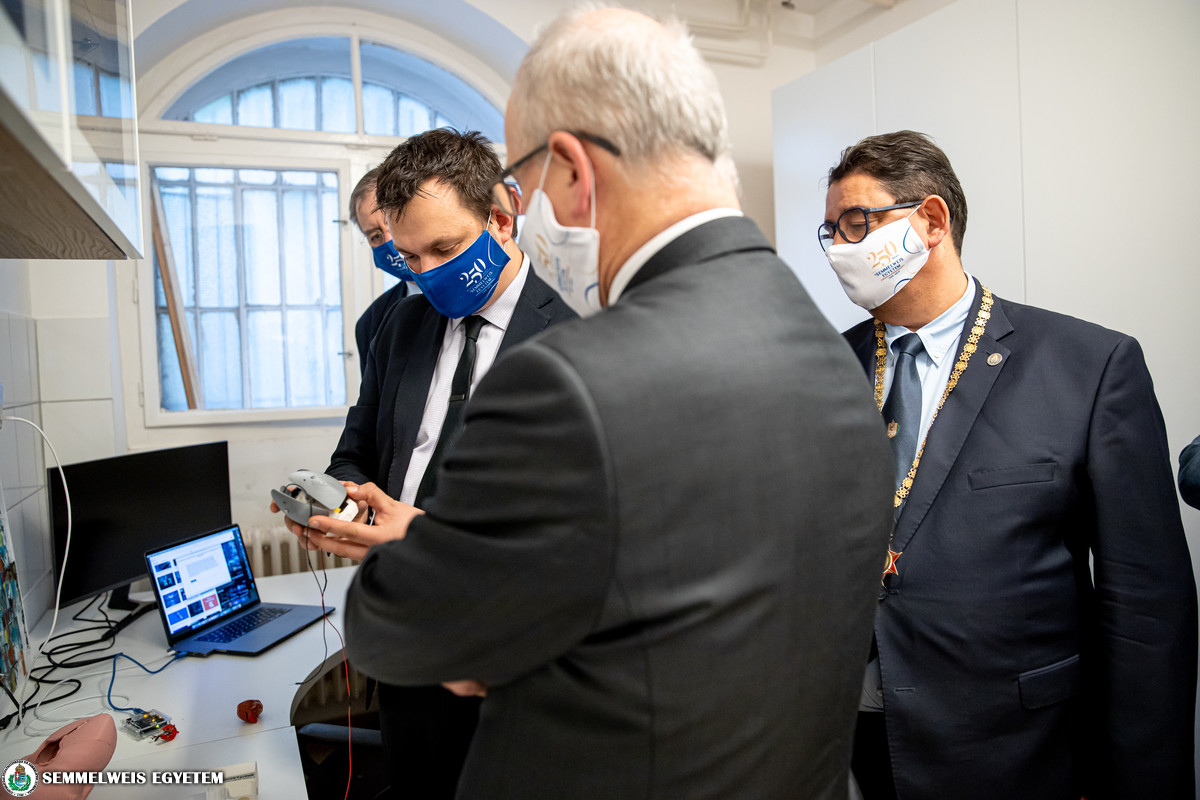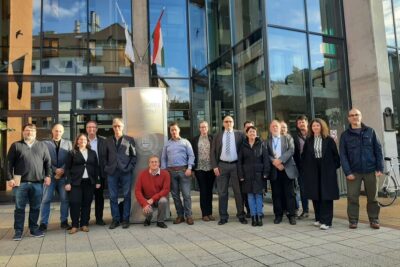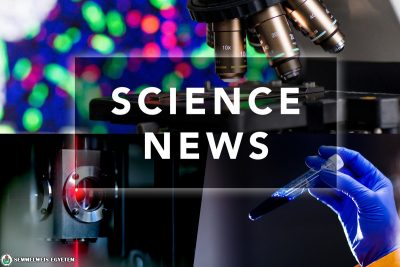The new 3D Centre of Semmelweis University has recently been opened at the Anatomy Centre in the framework of a professional event. The purpose of the establishment of this new center was to facilitate the increased use of opportunities provided by the new technology in everyday research, education and health care. Currently there are nine printers available at the centre for creating 3D models, which can either be applied as a customized, surgical, decision support device or can be used as a template. Parallel to this, there is a new elective course entitled digital medicine available in both medical and dental training.
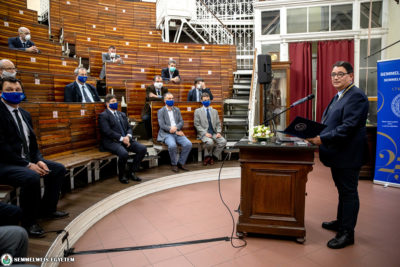 Informatics, engineering and medicine: the new 3D Centre has been established at the intersection of these three areas – pointed out Dr. Béla Merkely, rector at the event organized on the occasion of the opening of the centre. The purpose of the centre is the education and research of modern information technology opportunities from a medical aspect, as well as the implementation of the acquired knowledge in health care. As Dr. Béla Merkely emphasized, the centre belongs to those unique places at the university, which could have been located anywhere at the campus, since this technology can support the results of several disciplines in relation to education, research and health care alike. The two rooms, currently making up the territory of the centre, are very special due to their modern technical equipment as well as the dedication and knowledge of the young colleagues who work there – he said. As the rector emphasized, the Department of Anatomy was among the first five departments of the university, therefore with the 3D Centre’s location at the Anatomy Centre the university’s youngest unit and its oldest department with a history of 250 years meet. Dr. Béla Merkely highlighted the significance of continuous change and development, which is necessary if we would like to face and solve the current social and economic challenges, to train professionals with the most modern knowledge.
Informatics, engineering and medicine: the new 3D Centre has been established at the intersection of these three areas – pointed out Dr. Béla Merkely, rector at the event organized on the occasion of the opening of the centre. The purpose of the centre is the education and research of modern information technology opportunities from a medical aspect, as well as the implementation of the acquired knowledge in health care. As Dr. Béla Merkely emphasized, the centre belongs to those unique places at the university, which could have been located anywhere at the campus, since this technology can support the results of several disciplines in relation to education, research and health care alike. The two rooms, currently making up the territory of the centre, are very special due to their modern technical equipment as well as the dedication and knowledge of the young colleagues who work there – he said. As the rector emphasized, the Department of Anatomy was among the first five departments of the university, therefore with the 3D Centre’s location at the Anatomy Centre the university’s youngest unit and its oldest department with a history of 250 years meet. Dr. Béla Merkely highlighted the significance of continuous change and development, which is necessary if we would like to face and solve the current social and economic challenges, to train professionals with the most modern knowledge.
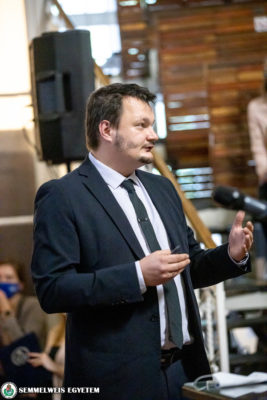 The head of the new unit is Dr. János Imre Barabás, resident cardiac surgeon at the Heart and Vascular Centre, who spoke about the currently available technologies and opportunities at the 3D Centre. He also introduced the two types of 3D printers. One of their projects was prepared with the help of fused deposition modelling (FDM), which provided the base for the first university publication on the use of 3D printing in 2017. In this project the heart of a patient, who had a complicated medical history, was modelled before the operation. In the course of a previous intervention, the patient’s ribcage was unified with metal plates among which an aneurism evolved. The 3D model prepared on the basis of the CT scan displayed the position of the metal plates, the aneurism, and the aorta, which facilitated the preparations for the operation as well as the exact exploration of the area. With the help of the technology, the exact anatomical positions of different structures are shown, which the surgeon can palpate on the printed 3D model during the operation. Nowadays there is an opportunity to try the operation steps on the customized models in advance, since this material can also be cut – said he.
The head of the new unit is Dr. János Imre Barabás, resident cardiac surgeon at the Heart and Vascular Centre, who spoke about the currently available technologies and opportunities at the 3D Centre. He also introduced the two types of 3D printers. One of their projects was prepared with the help of fused deposition modelling (FDM), which provided the base for the first university publication on the use of 3D printing in 2017. In this project the heart of a patient, who had a complicated medical history, was modelled before the operation. In the course of a previous intervention, the patient’s ribcage was unified with metal plates among which an aneurism evolved. The 3D model prepared on the basis of the CT scan displayed the position of the metal plates, the aneurism, and the aorta, which facilitated the preparations for the operation as well as the exact exploration of the area. With the help of the technology, the exact anatomical positions of different structures are shown, which the surgeon can palpate on the printed 3D model during the operation. Nowadays there is an opportunity to try the operation steps on the customized models in advance, since this material can also be cut – said he.
There are nine 3D printers available at the centre, which can currently print different types of plastic. Some of them are synthetic resin printers (Stereolithography, SLA), which can produce a type of material that is suitable for medical purposes. This material can also be used in a surgical environment, even as a surgical template or a medical implant that can be implanted for maximum 3 months. The medium-term objective is the production of implantable prostheses printed of surgical stainless steel and titanium.
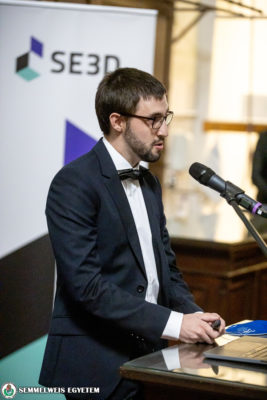 Dr. Dániel Palkovics, dental specialist and PhD student at the Department of Periodontology, head of the dental section of the 3D Centre, emphasized that the aim is to use 3D technology in education, research and health care, based on the university’s three main pillars and to make it available to all disciplines where this technology can be applied. Therefore, the first step is building a community to map, which areas use 3D technology at the university. He highlighted that currently the major target is to serve education, research and innovation in the first place, the production of customized implants in health care is a progressive territory. Regarding education, an important step has already been taken, since digital medicine as an elective course will be available from the second semester of this academic year in both medical and dental training – said he. Regarding research, the purpose is to build a system, which would provide a framework for the specialists of the different clinics to be able to work together on clinical and basic research projects – pointed out Dr. Dániel Palkovics.
Dr. Dániel Palkovics, dental specialist and PhD student at the Department of Periodontology, head of the dental section of the 3D Centre, emphasized that the aim is to use 3D technology in education, research and health care, based on the university’s three main pillars and to make it available to all disciplines where this technology can be applied. Therefore, the first step is building a community to map, which areas use 3D technology at the university. He highlighted that currently the major target is to serve education, research and innovation in the first place, the production of customized implants in health care is a progressive territory. Regarding education, an important step has already been taken, since digital medicine as an elective course will be available from the second semester of this academic year in both medical and dental training – said he. Regarding research, the purpose is to build a system, which would provide a framework for the specialists of the different clinics to be able to work together on clinical and basic research projects – pointed out Dr. Dániel Palkovics.
Dr. Dániel Palkovics started to use 3D technology so that he could better plan certain surgical techniques ahead, since a virtual model provides huge support in the treatment of more complex, challenging defects. He mentioned an example: during the maxillofacial reconstruction intervention of a patient with bone defects a bone block was modelled with 3D technology and a 3D template was used to remove the autologous bone material from the hip.
3D technology is not the future, but the present. Therefore, the ultimate goal is to have digital technology integrated into the education of certain speciality areas – he highlighted.
Pálma Dobozi
Photo: Attila Kovács – Semmelweis University
Translation: Katalin Illés-Romhányi
